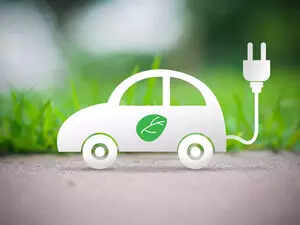
India will soon unveil a new scheme to incentivise electric vehicle purchases and expand charging infrastructure in line with the finance minister’s interim budget announcement to accelerate the adoption of eco-friendly transportation.
Officials in the Ministry of Heavy Industries (MHI) said on Friday that the allocation of INR 2,671.33 crore under the Faster Adoption and Manufacturing of (Hybrid &) Electric Vehicles in India (FAME India) Scheme for fiscal 2024-25 will be utilised to subsidise EVs sold till March 31, 2024.
The government had earmarked INR 5,171.97 crore under FAME India in the budgetary estimates (BE) for fiscal 2023-24 but scaled it down to INR 4,807.40 crore in the revised estimates (RE). According to MHI, INR 1980.83 crore has been disbursed under FAME II in FY24.
“Eligible EVs sold till March 31 will be subsidised from the FY25 budgeted amount. A new scheme also under the aegis of the MHI will be announced for sales made from April 1 onwards,” an official privy to the plans told ET, adding that the allocation and intended beneficiaries will be finalised soon.
The government supports EVs and chargers by subsidising them under FAME India scheme, which is currently in its second iteration (FAME II). The programme aims to spur localisation of EV components while also boosting sales. Manufacturers sell discounted EVs and then seek subsidised amount from the Centre. This is eventually disbursed with the lag of a quarter after localisation claims are verified by MHI.
In her budget speech, Sitharaman said the government will expand and strengthen the e-vehicle ecosystem by supporting manufacturing and charging infrastructure. “Greater adoption of e-buses for public transport networks will be encouraged through payment security mechanism,” she added.
Launched in 2019, FAME II has so far subsidised sales of nearly 1.2 million two-wheelers, 141,000 three-wheelers, and 16,991 four-wheelers. The allocation for FAME II was INR 10,000 crore of which INR 5,829 crore has been disbursed, The scheme was initially launched for three years but later extended to five, ending in 2024.
But implementation of the FAME scheme has been marred with issues as EV manufacturers falsified localisation claims and availed subsidies for mispriced vehicles. The lacunae were addressed with stricter compliance that now delays disbursal to manufacturers.
Raising another red flag, the Parliamentary Committee on Estimates questioned the high cost of EV chargers supported under the FAME II scheme. The Committee said it was concerned since charging stations sanctioned under FAME I cost a third of those under FAME II. In its response, MHI cited increased charging capacity and localisation as factors for the escalated cost under FAME II.

